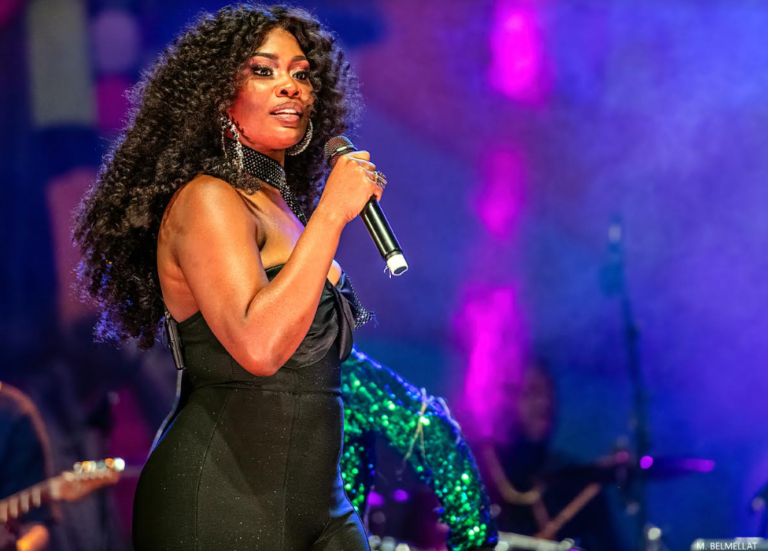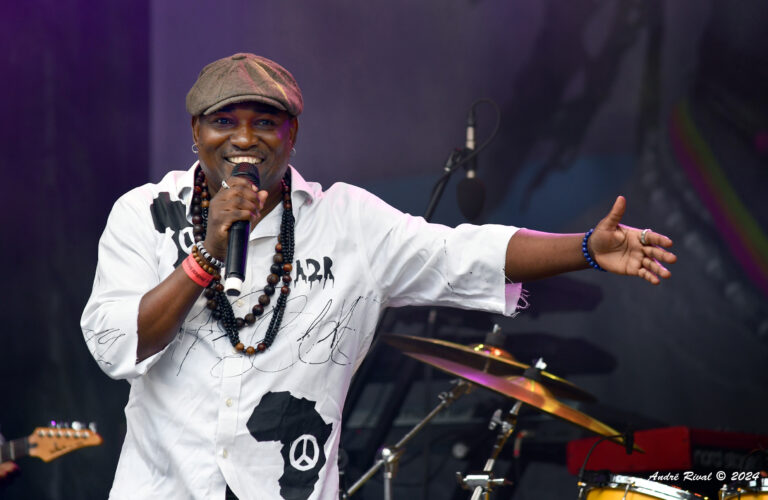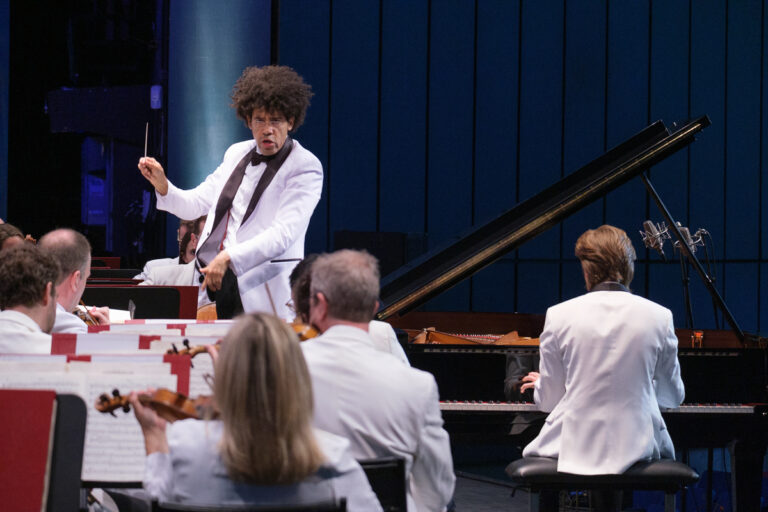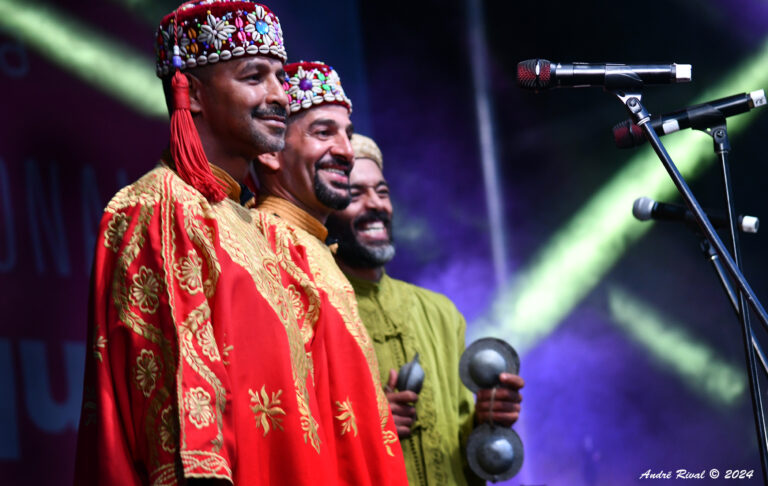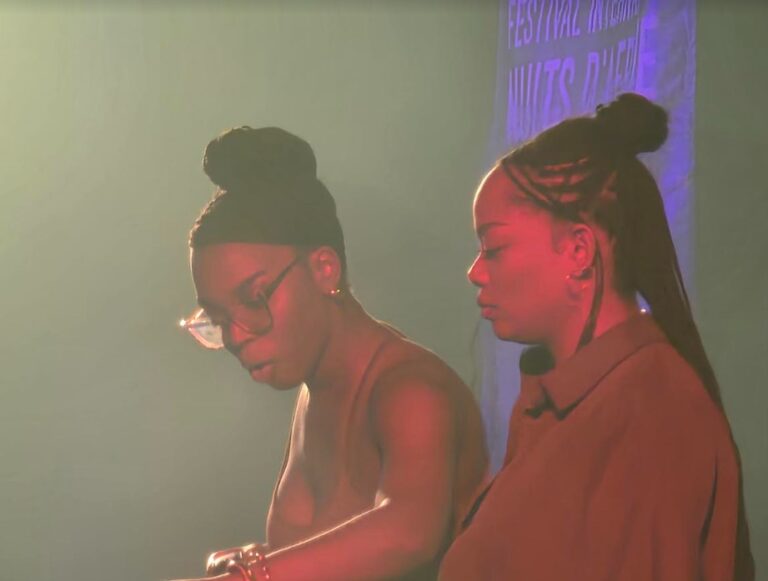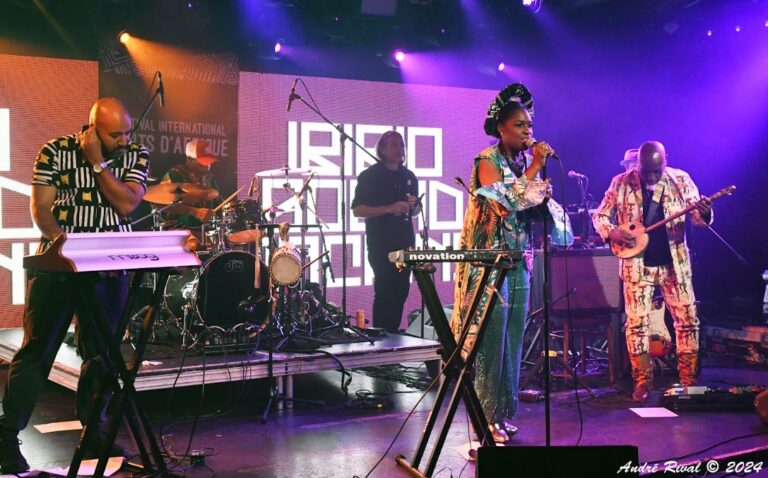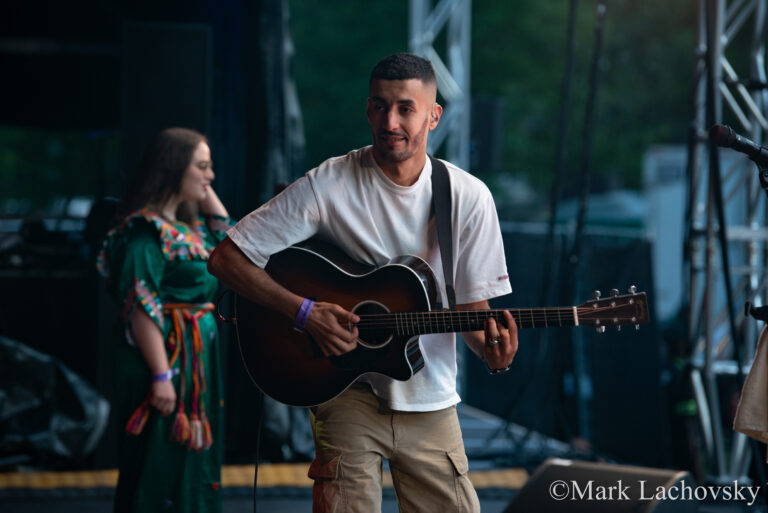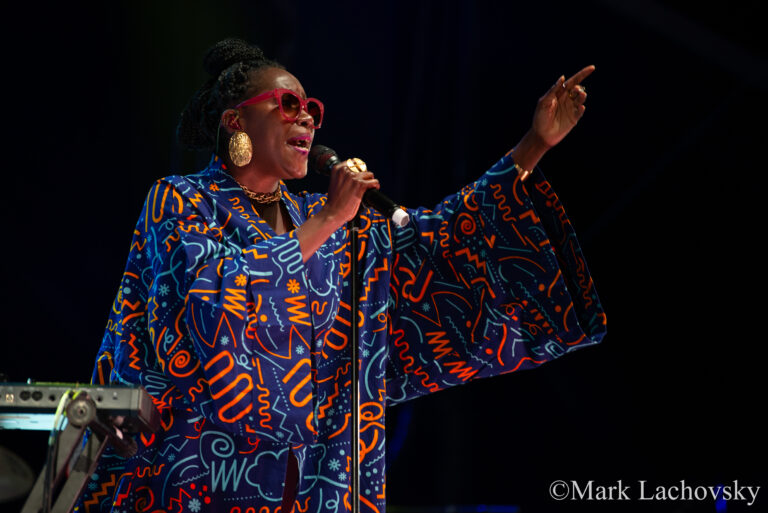Around 6pm on Sunday at the Festival international Nuits d’Afrique, it was the turn of Blaise LaBamba, a Congo-Kinshasa-born artist who has been based in Montreal since 1999, to take the big outdoor stage. From the outset, the 2022 Syli de Bronze winner’s intentions were clear: LaBamba would get the crowd dancing to infectious Congolese rumba, zouk and soukous.
On stage, the former member of General Defao’s Big Stars is accompanied by a host of musicians, dancers and backing singers. The Congolese singer’s various offerings are enhanced by guitar, drums, keyboards, synthesizers, percussion and numerous whistle blasts. The latter dictate the many swaying movements of the dancers on stage and people in the crowd.
The frenetic pace of the performance certainly charmed the impressive throng of festival-goers lining the TD – Radio-Canada stage. Clapping their hands on numerous occasions, the crowd showed their appreciation for the long instrumental flights of Blaise LaBamba and his band. It was hard to ask for a more festive offering to kick off this final evening of FINA 2024 activities.
Stephanie Osorio charms us with some cumbia
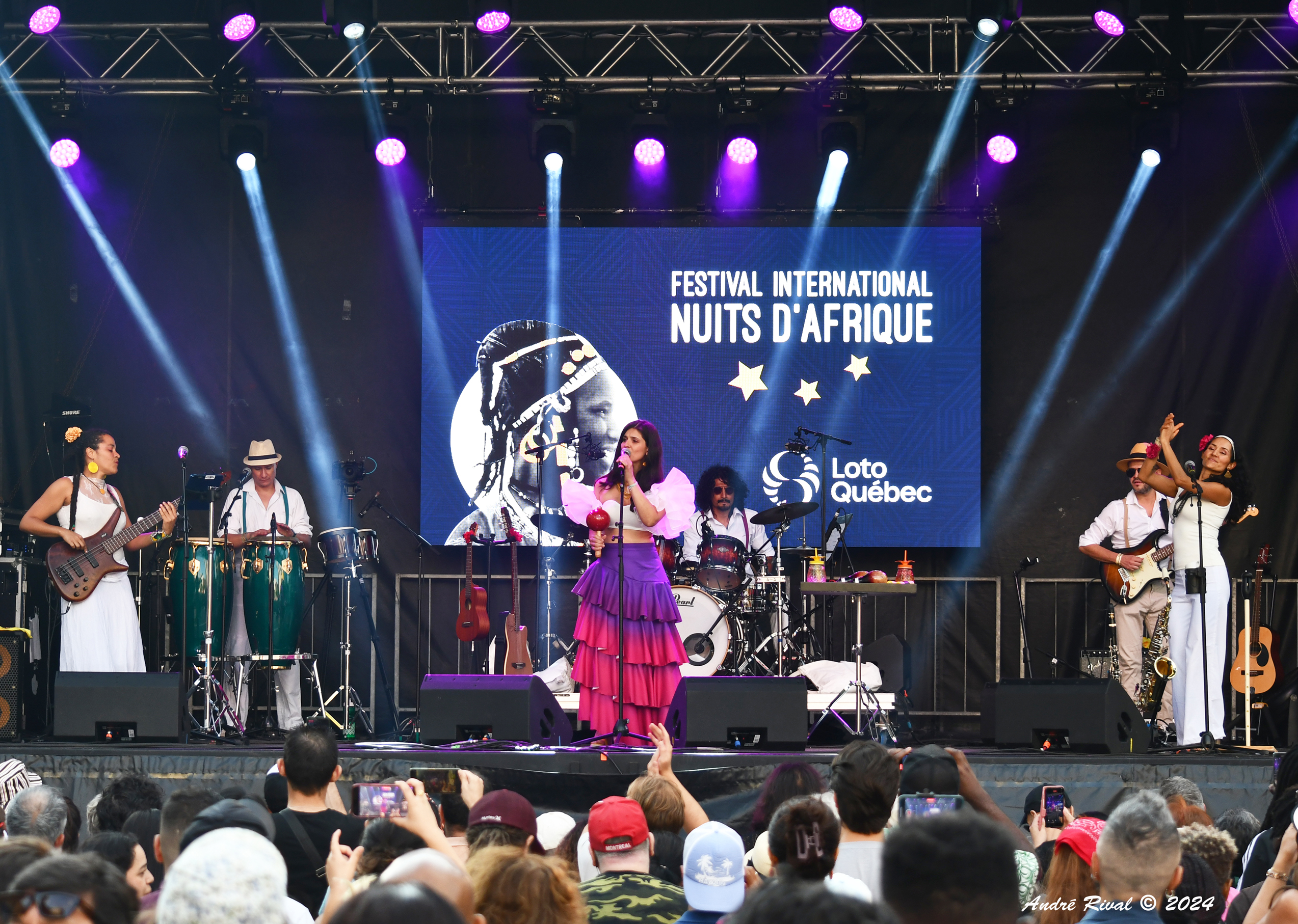
After having had a blast with Blaise LaBamba, fans on hand were treated to a gentler, more controlled offering from Stephanie Osorio, Colombian and Quebecer by adoption. Established in Canada in 2010, the singer-songwriter has been on the road for over a decade, and recently reaped the rewards of her efforts. In addition to being crowned “Female Artist of the Year” at the Latin Awards Canada in 2022 and 2023, Osorio has shone internationally thanks to her contribution to the theme song of the popular American series The White Lotus.
In March 2023, she released Fruta del Corazón, her first solo album at the confluence of cumbia, pop, folk and Afro-Latin. A large proportion of the tracks on this project were performed at her show.
Dressed in a long, colorful skirt, Osorio is confident on stage, maracas or guitar in hand. Like LaBamba, the singer is well surrounded; saxophone, bass, guitar, drums, various percussion instruments and flutes. A few minutes after her entrance, the Colombian compared her music to fruit. “There are a lot of different flavors and smells in what I do,” she explains.
Although she draws some of her inspiration from her Carthaginian roots, Osorio incorporates many contemporary elements into her music. Towards the end of her performance on the Loto-Québec stage, the singer offered a superb a cappella moment. The crowd fell silent in admiration, lulled to sleep by her hushed voice.
With no glitz or glamour, Stephanie Osorio took us to a place where it’s hotter than Montreal on this July evening.
Crédit photo: André Rival

